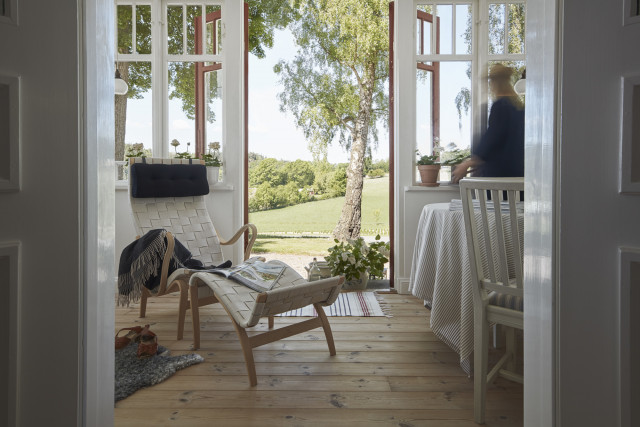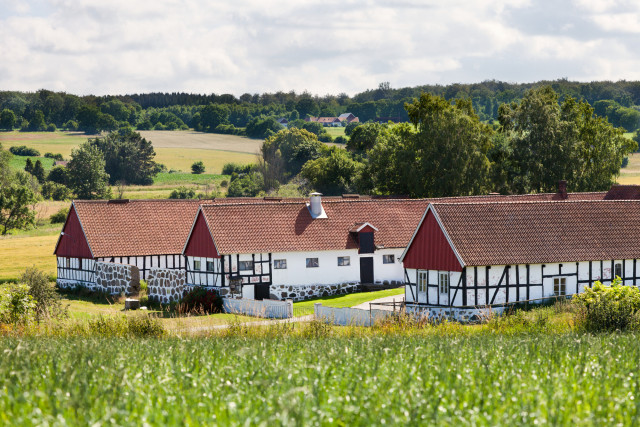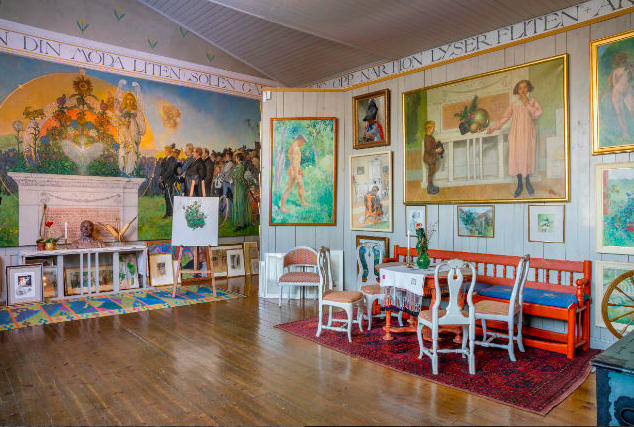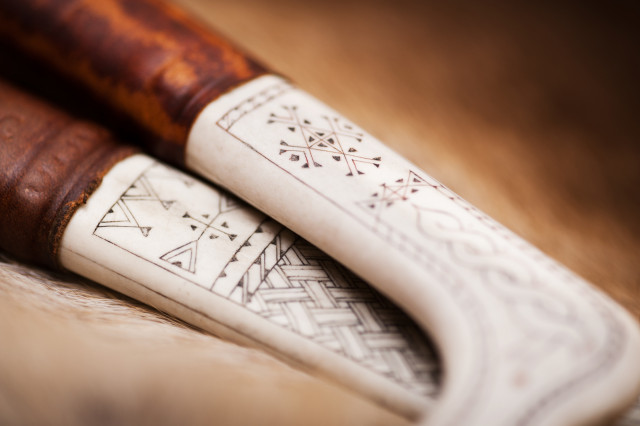This summer, go on a Swedish design odyssey
Chances are you already encounter Swedish design on a near-daily basis - even if you don’t realise it. From IKEA’s ubiquitous furniture to Hövding helmets and Tetra Pak packets, there’s a little bit of Sweden all over the world.

It’s hardly any surprise that Swedish design is so popular. It’s simple, practical and pleasing to look at.
“The most common way of describing Swedish design is something that is a clear form following function,” says Mats Widbom, CEO of Svensk Form, the Swedish Society of Crafts and Design. “It’s simplicity and use of natural materials. If you look back in history, it also has a strong connection to the development of society.”
 Photo: Patrik Svedberg/imagebank.sweden.se
Photo: Patrik Svedberg/imagebank.sweden.se
Swedish design might have gone global, but there’s nowhere better to experience it than on its home turf. There’s something about seeing it in its native environment and the way the Swedes interact with that helps you to understand it on a deeper level.
“It’s always best to experience the design of a country where it’s made because you have the whole context of landscape, people and lifestyle. All these pieces that are put into one experience,” says Mats.
Swedish design is often lumped into a single category but there are certain regional nuances. Learn about them before you visit Sweden to get the most out of your design odyssey.
Southern Sweden
The south of Sweden is a region of astonishing natural beauty, rolling landscapes and quaint artistic villages. The half-timbered houses - known in Swedish as korsvirkeshus - are perhaps the most distinctive feature of the mainland whilst limestone is the building material of choice on Gotland, an island to the southeast of Sweden.
 Half-timbered house in Skäne. Photo: Conny Fridh/imagebank.sweden.se
Half-timbered house in Skäne. Photo: Conny Fridh/imagebank.sweden.se
“A favourite of mine is Furillen limestone quarry on Gotland. It’s an old limestone quarry that photographer Johan Hellström found when he was doing fashion photography and developed into a very beautiful hotel and restaurant,” says Mats.
He adds that the Sankt Petri Church in Klippan is a “masterpiece” and encourages tourists in Southern Sweden to visit the Smart Textiles centre in Borås to learn about cutting-edge developments in the textile industry.
 Smart Textiles Showroom, Borås. Photo: Tina Stafrén/imagebank.sweden.se
Smart Textiles Showroom, Borås. Photo: Tina Stafrén/imagebank.sweden.se
Mats’ personal pick of design places in Southern Sweden:
-
The sauna in Frihamnen, Gothenburg
-
Fabriken Furillen hotel, Gotland
-
Wanås konst, Skåne
Click here to discover more design places in Southern Sweden
Central Sweden and Stockholm
There’s plenty more to Sweden than Stockholm although the capital is a smörgåsbord of design gems. From the grand National Museum to UNESCO World Heritage site Skogskyrkogården, you can quite literally stroll from one design spot to the next.
 Skogskyrkogården. Photo: Susanne Hallmann/Kyrkogårdsförvaltningen
Skogskyrkogården. Photo: Susanne Hallmann/Kyrkogårdsförvaltningen
But it’s when you get outside of the city that regional features begin to emerge. Travelling through the countryside you notice how building materials and the tradition of using colour shifts in different regions.
“In Dalarna, you have the Falun red-painted houses in cluster villages. You see it in the rest of the country but in Dalarna it has perhaps the strongest impact because you see entire villages painted in Falun red. The colour comes from the copper mines in Falun and has become an image of the Swedish cottage and longing for the countryside,” says Mats.
 The home of Carl and Karin Larsson. Photo: Jann Lipka/imagebank.sweden.se
The home of Carl and Karin Larsson. Photo: Jann Lipka/imagebank.sweden.se
A picture-perfect example is the home of Carl and Karin Larsson. It’s Sweden’s most famous home - a colourful and creative space which inspired some of Carl Larsson’s best-known watercolours - in the chocolate-box town of Sundborn.
Mats’ personal pick of design places in Stockholm and central Sweden:
Click here for more design places in Stockholm and central Sweden
Northern Sweden
There’s something mythical about the north of Sweden. With its dramatic landscapes framed by craggy hills, it’s no surprise this part of the world has inspired so many epic sagas. It’s also where most of the country’s Sami population live and so the best place to hunt down some authentic Sami crafts at Jokkmokk market.
 Sami handcraft. Photo: Jessica Lindgren/imagebank.sweden.se
Sami handcraft. Photo: Jessica Lindgren/imagebank.sweden.se
“If you go to Northern Sweden you have the Sami Duodji which is a very strong tradition. There’s the Jokkmokk market in February which is really something special, it’s one of the oldest market places in the world,” Mats tells The Local.
You’ll see less Falun red in the north and more wooden snow fences and barns. Northern Sweden stands for nature -- the use of wood and natural materials is common as exemplified by the Treehotel in Harads some 30 miles south of the Arctic Circle. Several of Scandinavia’s leading architects were commissioned to each design a hut: “It’s a must-see if you want to combine the experience of nature and architecture”, says Mats.
 Photo: Treehotel in Harads. Photo: Lola Akinmade Åkerström/imagebank.sweden.se
Photo: Treehotel in Harads. Photo: Lola Akinmade Åkerström/imagebank.sweden.se
Mats’ personal pick of design places in Northern Sweden:
-
Icehotel, Jukkasjärvi
-
Bildsmuseet, Umeå
-
Treehotel, Swedish Lapland
Click here to discover more design places in Northern Sweden
This article was produced by The Local Creative Studio and sponsored by Visit Sweden.
This content was paid for by an advertiser and produced by The Local's Creative Studio.

Join the conversation in our comments section below. Share your own views and experience and if you have a question or suggestion for our journalists then email us at [email protected].
Please keep comments civil, constructive and on topic – and make sure to read our terms of use before getting involved.
Please log in here to leave a comment.